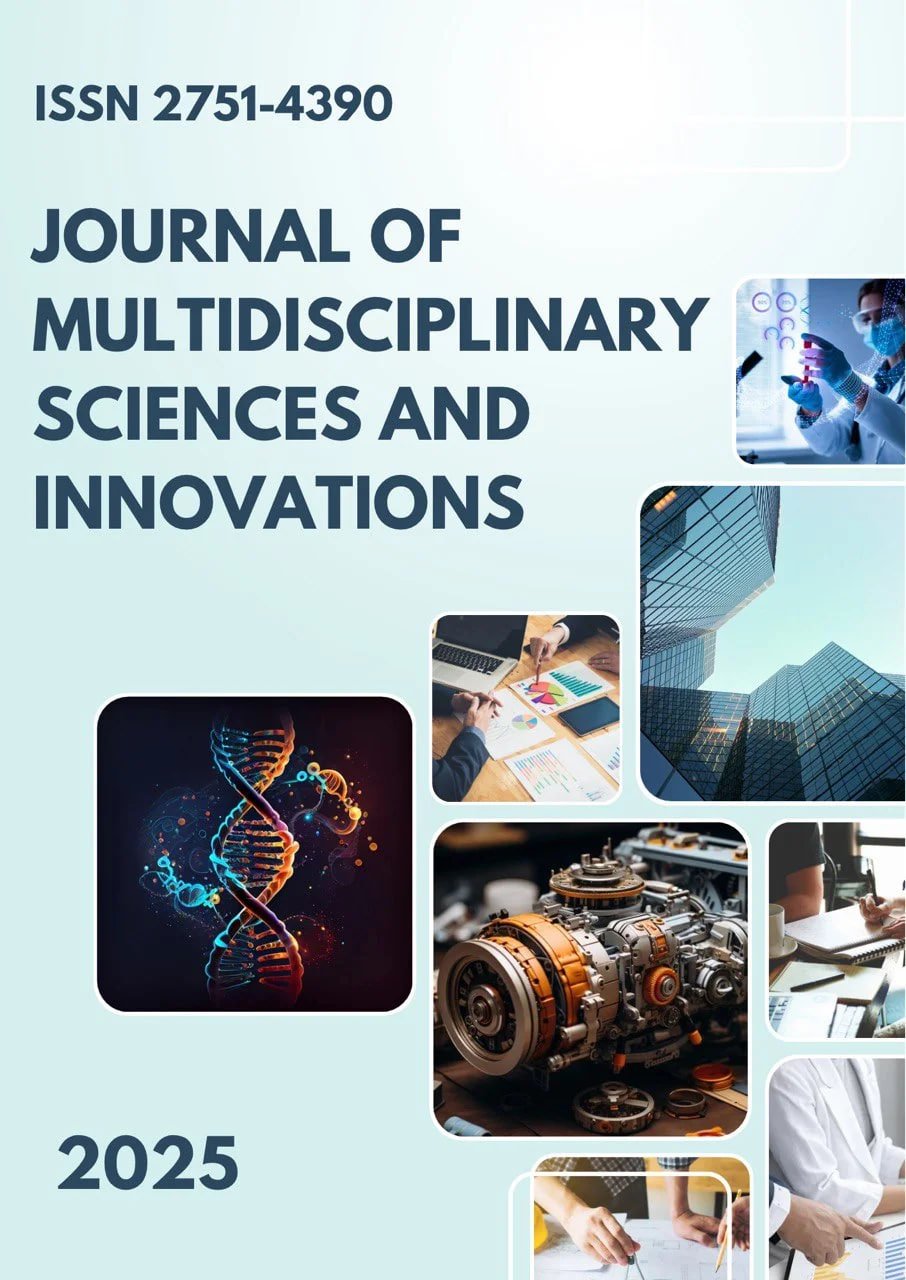THE ROLE OF INNOVATIVE TECHNOLOGIES IN DETERMINING QUALITY WORKING CONDITIONS IN TEXTILE WORKSHOPS
Main Article Content
Abstract
In this article, the scientific and practical foundations of the introduction of innovative technologies in the process of monitoring quality working conditions in textile workshops are studied. The technological parameters affecting the production microclimate, dust concentration, noise, vibration load, ergonomic production capacity, and the physiological characteristics of women's labor are analyzed. The practical implementation of corrections such as IoT ventilation systems, robotic yarn winding equipment, HEPA filtration technology, integration of ISO 45001 labor standards, and preventive maintenance control the change in indicators in the workshops. The result shows that the introduction of new technologies not only increases material labor productivity, but also allows operators to operate relatively harmlessly in the production process. The article proposes a new scientific study at the intersection of occupational hygiene, industrial technologies, and digitalization platforms in the textile industry.
Downloads
Article Details
Section

This work is licensed under a Creative Commons Attribution 4.0 International License.
Authors retain the copyright of their manuscripts, and all Open Access articles are disseminated under the terms of the Creative Commons Attribution License 4.0 (CC-BY), which licenses unrestricted use, distribution, and reproduction in any medium, provided that the original work is appropriately cited. The use of general descriptive names, trade names, trademarks, and so forth in this publication, even if not specifically identified, does not imply that these names are not protected by the relevant laws and regulations.
How to Cite
References
1. Portal of Legislation of the Republic of Uzbekistan. (electronic resource) https://www.lex.uz/.
2. Information from the official website of the State Statistics Committee of the Republic of Uzbekistan. (electronic resource)https://www.stat.uz/.
3. World Bank Indicators, WDI, (electronic resource)https://datacatalog.worldbank.org/
4. Sh.R.Khamdamov, Institute of Economic Research at the TSU, Journal of Economic Analysis, 1 (241) (2020

